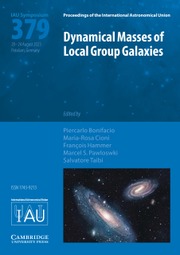No CrossRef data available.
Article contents
Dating Historical Arabic Observations
Published online by Cambridge University Press: 03 March 2020
Abstract
The first visibility of the lunar crescent signals the start of a new month in the Islamic calendar. The eminent astronomer Ḥabash al-Ḥāsib sib developed a method of uncompromising complexity for predicting the visibility of the lunar crescent. He derived his threshold value from a moonwatch carried out at different places in Iraq on November 17th, 860 CE. We will allude to a few modern visibility criteria as well and highlight the uncertainties of today’s calculations when converting historical Arabic into Julian or Gregorian dates. Tables of first visibility of the lunar crescent for different locations are provided for the purpose of date conversions. Since the Islamic calendar was based on the observation of the lunar crescent, historical dates imply information on positive and negative sightings of the lunar crescent. From such information estimations of cloudiness in different regions of the Islamic world can be extracted.
- Type
- Contributed Papers
- Information
- Proceedings of the International Astronomical Union , Volume 14 , Symposium A30: Astronomy in Focus XXX , August 2018 , pp. 163 - 166
- Copyright
- © International Astronomical Union 2020


